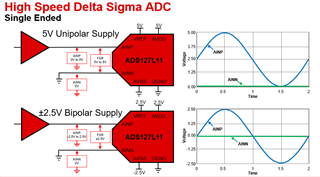Other Parts Discussed in Thread: ADS127L18, ADS127L21, TINA-TI, ADS127L11
Tool/software:
Hello Ti,
I am looking for ADC which is capable of simultaneous sampling and operates at 3.3V, my highest frequency of interest is 15 kHz. Could TI suggest a suitable part?
ADS131M04-Q1 has maximum sampling rate of 64 KSPS, my question is it for every channel or since there are 4 channels it gets divided by 4 which is 16ksps available to each channel? Please let me know, as I have to finish off the part selection.



